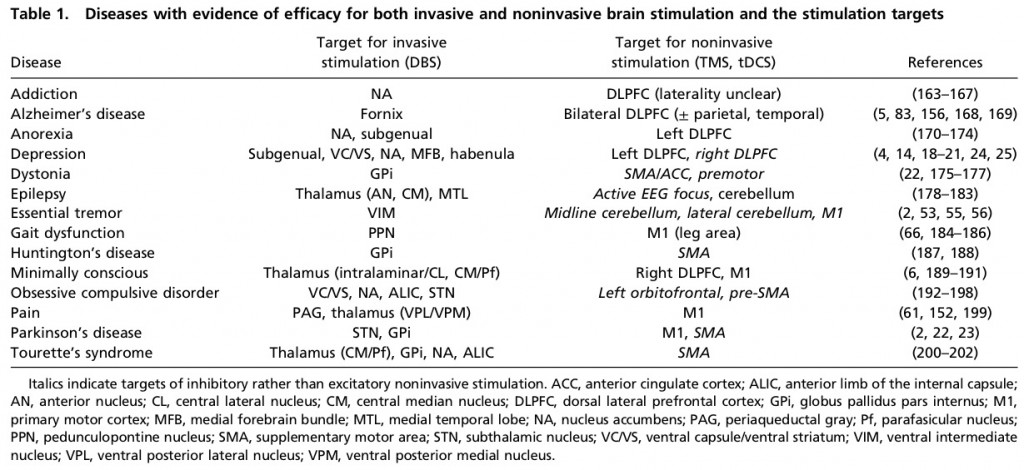For years we heard about ‘right brain’ vs. ‘left brain’ thinking. Now that that is turning out to be a myth I’m seeing more and more references to brain networks. And as it applies to tDCS we’re hearing about accessing regions of the brain previously thought to be inaccessible via surface electrodes.
In this excellent research, Michael D. Fox (et al) access entire networks via a single node and beg the question, why Deep Brain Stimulation (a tricky and risky surgical procedure) when we can access the same networks through non-invasive stimulation (tDCS, TMS etc).
In this article, we identify diseases treated with both types of stimulation, list the stimulation sites thought to be most effective in each disease, and test the hypothesis that these sites are different nodes within the same brain network as defined by resting-state functional-connectivity MRI.
…
In both cases, the effects of stimulation propagate beyond the stimulation site to impact a distributed set of connected brain regions (i.e., a brain network). Given increasing evidence that these network effects are relevant to therapeutic response, it is possible that invasive and noninvasive stimulation of different brain regions actually modify the same brain network to provide therapeutic benefit.

